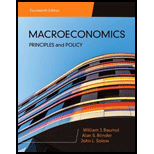Suppose that the market for bottled water can be represented by the following equations: Demand: P = 10 - 2QD Supply: P = 1 + 0.5QS where P is the price per gallon, and Q represents quantity of purified water, represented in millions of gallons of water consumed. a) Calculate the equilibrium price and quantity of bottled water. b) Concerned over high water prices after the winter storm, the government sets a price ceiling of $2.25 per gallon of water. What is the new quantity of water sold in the market? Use supply and demand curves to illustrate your answer, showing both the original equilibrium from part a) and the new quantity sold with the price ceiling. c) Calculate the producer surplus and consumer surplus at the initial equilibrium price and quantity from part a). d) Calculate the new producer surplus and consumer surplus with the price ceiling from part b). e) How does the total consumer and producer surplus in part c) compare to the total consumer and producer surplus in part d)? What explains the difference in these two figures?
Suppose that the market for bottled water can be represented by the following equations:
Demand: P = 10 - 2QD
Supply: P = 1 + 0.5QS
where P is the price per gallon, and Q represents quantity of purified water, represented in
millions of gallons of water consumed.
a) Calculate the
b) Concerned over high water prices after the winter storm, the government sets a
ceiling
market? Use
original equilibrium from part a) and the new quantity sold with the price ceiling.
c) Calculate the
and quantity from part a).
d) Calculate the new producer surplus and consumer surplus with the price ceiling from
part b).
e) How does the total
consumer and producer surplus in part d)? What explains the difference in these two
figures?
Step by step
Solved in 5 steps with 8 images









